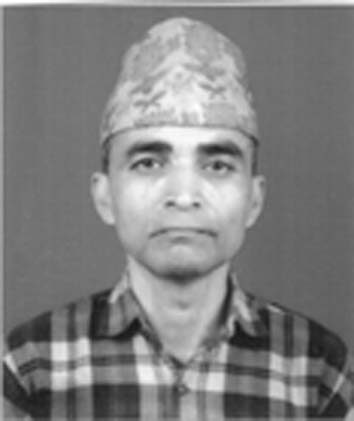Improved Seeds Boost Agro Production

Khilendra Basnyat
Although agriculture is still the major occupation of people of many countries, especially of the developing and least developed ones, there is an insufficient agricultural production in these countries mainly due to the retention of age-old practices. Actually, increasing agricultural production relies largely on improved seeds and their availability, but this fact has not been realised by the concerned people still now. Since its inception in 1945, the Food and Agriculture Organisation (FAO) has emphasised on the use of improved seeds for farming. Today, it has been proved that the key to rapid increase in crop production and productivity is through the production and use of improved seeds.
Investment
While some countries have good investment programmes, others have been assisted by the international agricultural research centres. Still others have developed programmes for evaluating different varieties of crops. In response to requests from its member nations, FAO implemented the Seed Improvement and Development Programme (SIDP) in the mid-seventies. Several countries and international organisations have assisted SIDP.
The main objectives of SIDP are to assist developing and least developed countries and establish and operate improved seed programmes apart from mobilising multilateral and bilateral resources for this purpose. After the inception of SIDP, several seed projects with millions of US dollars were operated in several countries. Many persons were trained in various seed technology activities. Several textbooks, technical guidelines, information materials and video films were issued in Arabic, Chinese, English, French and Spanish languages.
SIDP also introduced a Computerised Seed Information System (SIS) with subsystem on the national seed activities of selected countries, the crop varieties of different species in some countries and institutions involved in seed exchange. Other subsystem contained thousands of addresses of seed institutions in some countries and the production of seed equipment by some major producers worldwide apart from planning a subsystem on plant genetic resource.
In 1957, FAO started the world seed campaign in which 79 countries and territories participated. This campaign, which culminated in 1961, made farming communities and the general public more aware of the contribution that improved seeds can make to agricultural development. The establishment of the International Agricultural Research Centres can be considered as an outcome of this campaign. Constraints in many seed programmes stem directly from the lack of trained technology personnel. Training of seed technologies and analysis is, therefore, important.
Despite some efforts, improved seeds production and distribution are not well developed in North Africa and West Asia, especially for food legume, pasture and forage crops. The status of seed programmes is not uniform in all countries. Lack of seed of improved varieties at the farmers' level is still one of the constraints to increased productivity in many countries, especially in developing and least developed countries. In most of these countries, subsistence farmers lack access to improved seeds due to concerned governments' negligence. Some North African and West Asian countries are unable to utilise the results of crop improvement work carried out at the national and international level. It is because of weak seed production and distribution systems.
In many countries quality controls systems are still inadequate or even do not exist. Therefore, complication has arisen to distribute improved seeds. Due to technical and financial resources, many least developed countries are unable to set up comprehensive government controlled seed certification programmes. Recognising this and wishing to promote the interstate movement of seeds by farmers, FAO in the past planned to develop a model of an alternative system for quality control. Such a programme would see the production of what FAO calls quality declared seeds less expensive than certified ones but still of a good quality. Also, the technical guidelines for standards and procedures for the production of quality declared seed was prepared.
Supply of seed
Nowadays, only a few developing and least developed countries implement realistic national programmes for improved seeds despite efforts from the concerned governments and donors. Actually, FAO has organised a series of technical meeting in Asia and Africa on the plan and implementation of seed programmes. Such meetings have been organised to promote the technical cooperation on a sub-regional basis and to define, within the context of development plans, seed policies' for the preparation of national and regional seed programmes. Also, FAO has promoted joint actions on variety of development of seeds production by both the public and private sectors with the hope that each country will have in operation viable seed enterprises and secured supplies of seeds.
Improved seeds are of paramount importance for boosting agricultural production. Most farmers, especially of the developing and least-developed countries, are unable to use such seeds due to their unavailability and ignorance. Therefore, efforts are needed from both the national and international organisations to strengthen national capabilities to produce improved seeds in order to increase the agricultural production in most countries, especially in the developing and least-developed countries.
(Basnyat is a freelance writer.)
Recent News

Do not make expressions casting dout on election: EC
14 Apr, 2022
CM Bhatta says may New Year 2079 BS inspire positive thinking
14 Apr, 2022
Three new cases, 44 recoveries in 24 hours
14 Apr, 2022
689 climbers of 84 teams so far acquire permits for climbing various peaks this spring season
14 Apr, 2022
How the rising cost of living crisis is impacting Nepal
14 Apr, 2022
US military confirms an interstellar meteor collided with Earth
14 Apr, 2022
Valneva Covid vaccine approved for use in UK
14 Apr, 2022
Chair Prachanda highlights need of unity among Maoist, Communist forces
14 Apr, 2022
Ranbir Kapoor and Alia Bhatt: Bollywood toasts star couple on wedding
14 Apr, 2022
President Bhandari confers decorations (Photo Feature)
14 Apr, 2022










